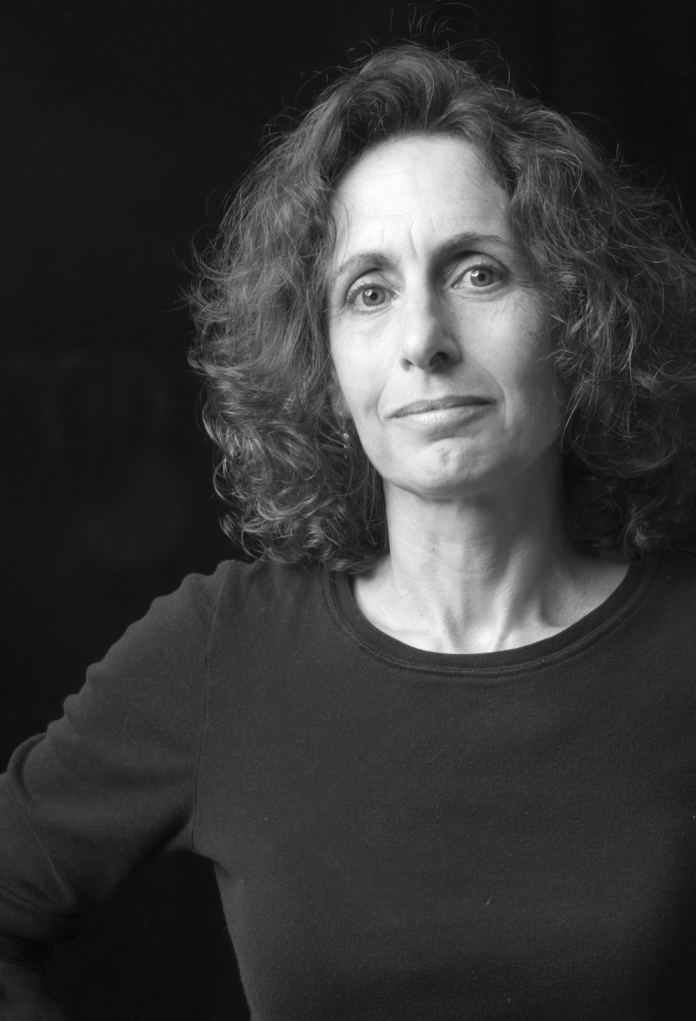By Angelina Tang
The human impact on the earth—and our subsequent self-inflicted doom—is one of the burning topics of today’s social commentary. It is a human issue that everybody who lives and breathes on this planet should be aware of and trying to fix, yet it has been turned into a political “debate” and a subject so gloomy that many of us actively try to avoid it.
This is the tone that author and journalist Elizabeth Kolbert confronts in her work. A writer for The New Yorker and critically acclaimed author, she has published three books centered on the topic of climate change. On Friday, October 14th, I had the honor of attending a lecture of hers at Kleinhans under Just Buffalo Literary Center’s Babel series, in which award-winning authors are invited to Buffalo to speak. Shoutout to Jonah Ruddock for taking me and Sophie Zhu for the tickets! You’re the best.
Kolbert’s books Field Notes from a Catastrophe, The Sixth Extinction, and Under a White Sky all tackle the subject of how humans have irreparably damaged the planet and, in turn, ourselves. Field Notes from a Catastrophe was her first publication, which originally started off as a three-part series in The New Yorker. In it, she discusses the general crisis of global warming and makes the reader aware of the fact that yes, we are in trouble due to our actions. From there, she wrote The Sixth Extinction, her Pulitzer prize-winning work about how humans have set off the sixth great extinction on earth, having wiped out thousands of plants and animals and putting a million more endangered species on the brink. Finally, her most recent book, Under a White Sky, discusses the pattern of humans causing environmental problems, and then trying to fix them and inevitably causing even more problems. It was this third work and its subject matter that Kolbert featured in her fascinating lecture on Friday night.
Kolbert spoke of many instances of this pattern occurring throughout history, both in the past and present. One prime example she discussed was that of the Chicago River. This is the river that flows, as aptly named, through Chicago. Back in the early 1800s, at the head of the Industrial Revolution, garbage, dead and unused parts of animals from meat factories, and other waste were all dumped into it. Since the ground the river runs across was relatively flat, the river’s flow wasn’t strong enough, so the waste piled up in exorbitant amounts on the surface until it was said that “a chicken could cross the river without once getting its feet wet.” The stench was comparably bad, as one can expect when thousands of carcasses were being dumped into it, but the worst part was that the Chicago River flowed, slowly but surely, into Lake Michigan—the source of Chicago’s drinking water.
Pretty soon, people discovered that dumping sewage into their drinking water was a bad idea. They were also presumably sick of the smell. As such, in 1900, a novel solution was devised and enacted: they reversed the flow of the river.
Yeah. It sounds like a bad idea, but its short-term effect was actually positive. By constructing an artificial slope and digging several smaller canals to facilitate its flow, the river was strengthened and flipped so that it flowed from Lake Michigan to the Mississippi River instead. The waste was cleared from the surface, and the river “resembled liquid” again, rather than being stagnant. As such, a human problem (pollution) was fixed by human means (civil engineering).
Unfortunately, that’s not the end. What happened as a result of this reversal was the exchange of invasive species between the Mississippi and Lake Michigan watersheds, which had previously not been connected (an extra canal had to be dug to connect the Chicago River into Mississippi). Asian carp are chief in this regard, and they have recently been found in the Great Lakes, actually, so the effects of this century-old construction are still being felt today.
This unfortunate pattern is one that has repeated throughout history, and it will certainly continue into the future. Kolbert went on to discuss the events of today and quite possibly tomorrow, commentating on what scientists and engineers are doing now to slow down global warming. She noted their inevitable downsides that ultimately undermine their impact from a broader perspective. For instance, a device in Iceland built to capture carbon dioxide from the atmosphere works great, but hardly makes a dent in the amount of greenhouse gasses holistically and building more would be far too costly to do.
Kolbert’s lecture—and work, in general—are important for their weight, their unflinching gravity. She says it like it is rather than instilling false hope, and that is a greater call to awareness and action than anything else. Truth is stranger than fiction, sometimes, and in most cases, the truth is the scariest thing of all. By making one aware of all the awful facts, she leaves us with nowhere to run and hide. Learning about the true depth of the crisis we’re in, and the crises we’re approaching if we continue down this path, is the first step to properly confronting them and working to help fix the problem. Personally, I found her work to be very enlightening and inspirational. Such is the true value of Kolbert’s writing.

